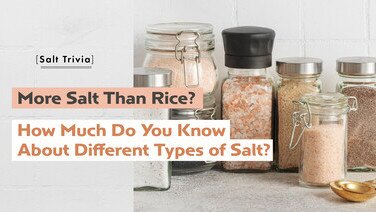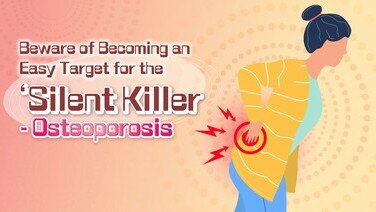There are all kinds of test kits advertised with official certification. What should consumers pay attention to before purchasing?
- Research before purchase: Verify the claimed certification and check the expiry date stated on the test kit. Do not overbuy to avoid wastage.
- The government has consolidated a list of approved rapid test kits for the public’s reference. Using this as a foundation, the Consumer Council has developed a Search Tool that combines the relevant approved RAT lists from Hong Kong, Mainland China, Macau, Singapore, Australia, EU and USA, to help consumers select suitable RAT kits.
What should consumers pay attention to when purchasing test kits online?
- Online stores generally do not provide the expiry date of the products. Consumers should not fully trust the claim listed on websites.
- Use a payment method with a chargeback mechanism when possible, such as a credit card.
- Avoid direct remittances to unknown personal accounts, as it may be difficult to seek redress in the event of disputes.
- Visit reputable traders/online stores.
- Purchase an appropriate quantity of test kits according to actual needs to avoid wastage.
Many test kits in the market are advertised with the EU CE mark. Does it mean that the product has obtained EU approval?
- Simply having a CE mark on the packaging does not mean the product has been tested for quality by the EU authorities. It is only a self-declaration that does not require licensing.
- If the RAT Kit has a CE mark, consumers can check if the test kit is listed in the EU’s “Common List of COVID-19 Rapid Antigen Tests”. It is worth-noting that even though the initial intention of the list was to include the RAT kits used by healthcare professionals, some manufacturers on the list have also produced models for lay persons’ use.
- If the product is for personal testing, for example, those generally available at retail points, consumers can pay attention to whether there is a set of 4 digits next to the CE mark. This number is the identification number of the notified body which ensures that the product’s design and packaging are suitable for regular consumer use.
What are “sensitivity” and “specificity” in RATs?
- The sensitivity of a rapid test kit refers to the ability to detect a positive result in an infected person.
- The specificity of a rapid test kit refers to the ability to test negative results in non-infected individuals.
- The World Health Organization recommends RATs to have a sensitivity of at least 80% and specificity of at least 97%.
If the brand of the RAT kit is not listed in the Council’s Approved Rapid Antigen Test Kits Search Tool, does it mean that the product is ineffective?
- It isn’t easy to generalise as there are different reasons for relevant products not showing on the list. For instance, the manufacturer may not have applied to be added to the list, or it may not be sold in the local market, so it is not included in the list in the relevant region.
- For consumers, however, if the relevant product can be found using the Search Tool, it would naturally give consumers more reassurance.
- The Council will regularly update the information in the Search Tool, so consumers are advised to refer to the tool before purchasing.
How can I interpret the data of “prospective clinical field studies” and “retrospective in vitro studies” on the Approved List?
- The EU requires an independent body to verify the performance of the test kits through prospective clinical studies or retrospective in vitro studies.
- The list will generally indicate which country or region the verification was carried out by an independent agency. For example, “DE” means the study was conducted by a German testing agency.
- Prospective clinical field studies:
A sensitivity greater than 80% when tested in symptomatic participants (within the first 7 days after symptom onset) or asymptomatic participants when the diagnosis was confirmed by RT-PCR nucleic acid testing in an independent field study; or A sensitivity of the test for participants with CT values <25 (i.e. a high viral load) should be 90% or greater for independent assessments.
A specificity above 98%.
At least 100 positive nucleic acid test participants and at least 300 negatives.
- Retrospective in vitro studies:
A sensitivity greater than 80% when tested in symptomatic participants (within the first 7 days after symptom onset) or asymptomatic participants when the diagnosis was confirmed by RT-PCR nucleic acid testing in an independent field study; or A sensitivity of the test for participants with CT values <25 (i.e. a high viral load) should be 90% or greater for independent assessments.
A specificity above 98%.
At least 100 positive nucleic acid test participants and at least 300 negatives.
- Prospective clinical field studies:
Some said that only RAT kits produced after November 2021 are reliable. Is that true?
- Most RAT products in the market target the nucleocapsid (N) protein antigen for testing. Generally speaking, as there is a lower probability of mutation on the N-protein, RAT kits can still detect the Omicron variant in theory.
- The Public Health Laboratory Services Branch of the Centre of Health Protection, Department of Health has conducted a preliminary evaluation of RAT kits procured by the government and confirmed that they effectively detect the Omicron variant. The assessment also included RAT kits manufactured before discovering the Omicron variant (i.e. before November 2021). Generally speaking, nucleocapsid protein is less prone to mutation, and all the RAT kits procured and distributed by the Government target the N-protein antigen. As such, the impact of the emergence of the Omicron variant on RAT’s effectiveness is insignificant.
- In the EU’s common list, a small portion of products has information indicating the coronavirus variants that can be detected.
Some said that if the sensitivity of the RAT kit is low, it is more prone to showing false negatives. Is that true? How can I better protect myself?
- Compared to nucleic acid tests and when the CT value of the sample is high, the sensitivity of the RAT is lower.
- As the sensitivity of RAT kits has limitations, the negative results of the RAT should not be completely relied upon to be considered safe, especially as a single negative result cannot completely rule out that the testee has been infected, but is currently in the incubation period, or that the testee is in the early stage of infection.
- It is vital to take preventive measures, even when a negative RAT result is obtained.
Will people at higher risk be advised to retest? What should we watch out for?
- If you are concerned that the first test result is not accurate, or that the result shows positive, and that you still have a RAT kit on hand, it is recommended to retest.
- Before taking the RAT, check that the RAT kit falls into the approved list from the government and beware of the expiry date. Refrain from rinsing your nose, drinking water, eating, brushing teeth, gargling, smoking or drinking within 1-2 hours before the test, and follow the instructions listed in the user guide.
- As the sensitivity of rapid antigen test kits has its limitations, the public should continue to remain vigilant and take preventive measures, including wearing masks properly, maintaining personal hygiene, and following social distancing measures, even if the RAT is negative.
How should RAT kits be stored after purchase? Does it need to be placed in the refrigerator?
- Read the instructions carefully and store the RAT product according to the manufacturer’s instructions.
- Generally, it can be stored in a cool place between 2°C to 30°C. It is not necessary to store it in a refrigerator.
- If the kit was stored in the refrigerator, it should be left at room temperature (15-30°C) for at least 30 minutes before testing. Do not open the test kit in advance while letting it return to room temperature.
- Tighten the cap after using the solution bottle.
Through developing the Approved Rapid Antigen Test (RAT) Kits Search Tool, the Consumer Council aims to bring convenience to consumers to conduct verification before purchase. The content of the relevant list will be continuously updated to ensure that consumers have the latest consumption information. In addition, the Council will continue to pay close attention to the supply, price, and quality of test kits in the market, as well as the sales practices of traders, and provide consumption tips and warnings promptly to safeguard the public’s health.







![[Baby Snacks Guide] Who Says Snacks Can’t Be Healthy?](/f/guide_detail/415742/376c212/bb%20snack.jpg)



